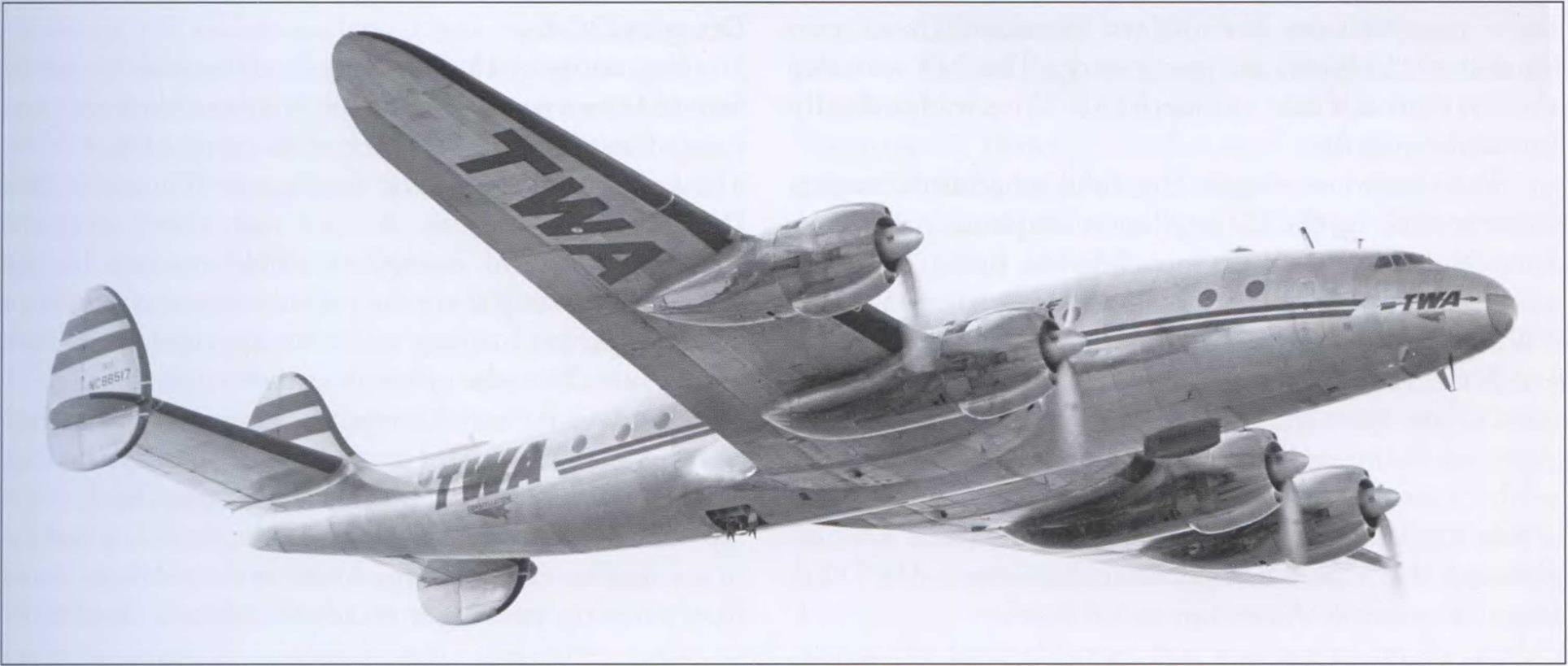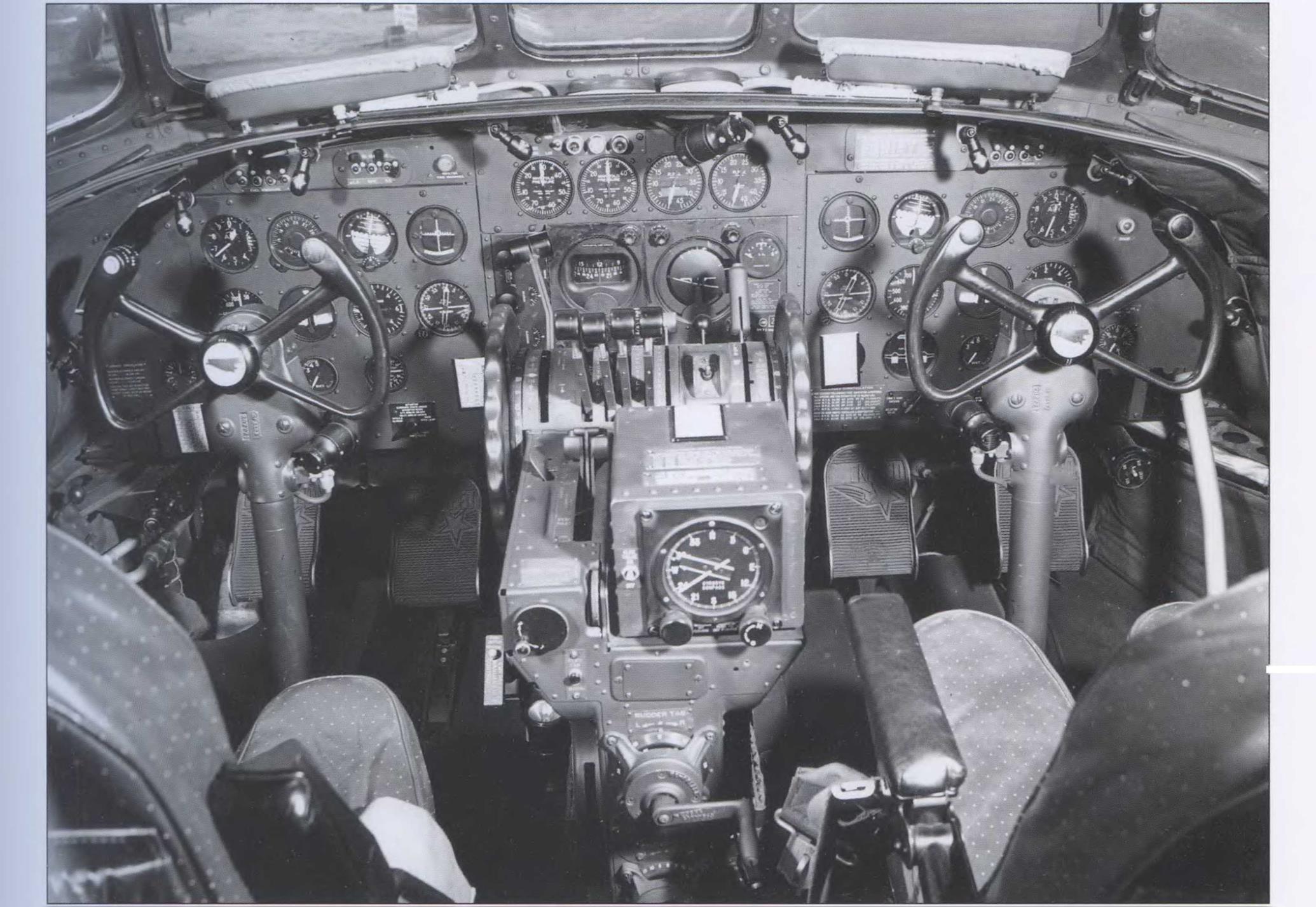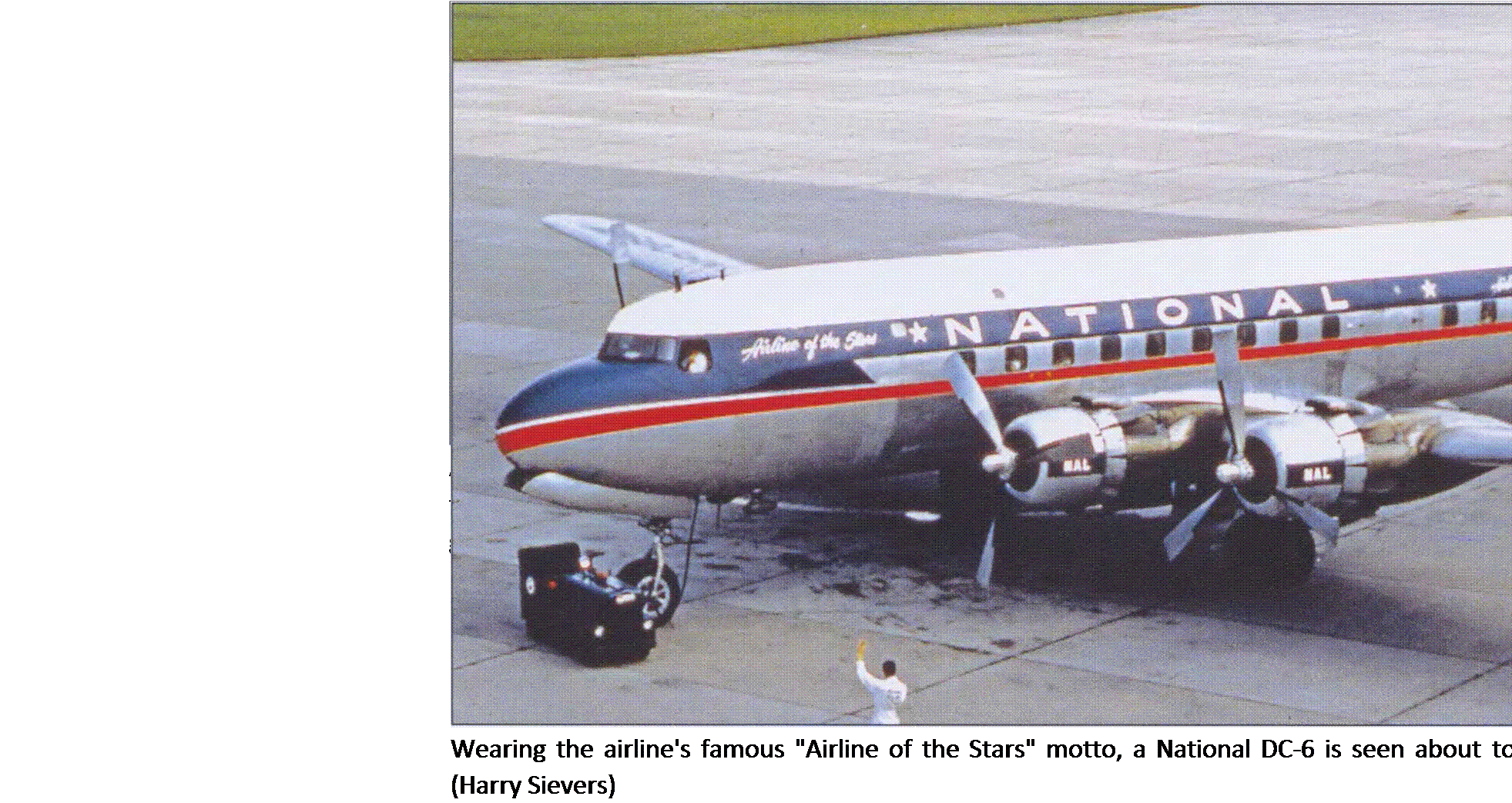Aircraft of the Era
Progress in aeronautics is nothing if not fast. Starting in the mid-1930s, commercial aircraft design took a huge leap skyward with the first DC-2 and DC-3, which at the time were termed the “Giant Douglas Flagships” by American Airlines. These twin-engine airliners were soon eclipsed by the four-engine Douglas DC-4E and Boeing 307, followed by the production DC-4 and Lockheed Constellation, with the Douglas DC-6 being considered the thoroughbred of that era. This significant march forward spanned a total of only 12 years, and took us from airplanes carrying 21 passengers in sometimes grueling unpressurized multistop transcontinental service, all the way to luxurious skyliners carrying 50 passengers in pressurized comfort spanning the great oceans, and doing so at about twice the speed of the fastest aircraft a decade earlier. Even at the intercity level, the modern new “twins” from Convair and Martin enjoyed the same speed and habitable higher-altitude cabins as the larger aircraft. We see that the world of postwar commercial aviation enjoyed a quantum improvement from its pioneering forebears of the Depression era.
Lockheed Constellation 049 through 149
It is easy to lose sight of the fact that what started in 1936, as the modest 36-passenger Excalibur airliner from Lockheed, became the 049 Constellation only three years later, which was an airplane with a pressurized cabin capable of carrying 46 passengers over a distance of 3,500 miles. At TWA’s behest for nine orders, Lockheed commenced with the airplane, making it the company’s largest undertaking to date. Pan American ordered 40 of the transoceanic type 149 (decreased in 1945 due to an order for the Boeing Stratocruiser). The prototype Constellation made its first flight on January 9, 1943, smack in the middle of the war. The airplane wore standard olive-drab-and-gray USAAF camouflage and insignia. This date highlights the reason that the very advanced Constellation became available to the airlines so soon after the war. The first Constellations were actually Army Air Force C-69 transports, and prior to the war’s end, Lockheed manufactured 31 of these airframes making them available to the airlines at incredibly low prices.
High speed for the Constellation was derived from its powerful Curtiss-Wright R-3350 Duplex Cyclone engines, which gave the aircraft a 25-percent boost in power versus the Douglas DC-4. The “Connie,” as the flying public knew it, also offered greater range, faster speed, higher payload capability, and a commensurate lowering of cost-per-seat-mile [the cost of moving one passenger seat over a distance of one mile] some 23 percent below the Douglas airliner. (Note: This book chronicles the ongoing and ever-present crosstown rivalry and “back and forth” success between the designs of Lockheed and Douglas during the 1940s and 1950s. There always seemed to
|

Despite the rapid delivery of DC-6s, United Air Lines continued to operate well-maintained but older DC-4s for several years. Mainliner Yellowstone, pictured at Oakland, California, in 1952, looks smart in the carrier’s new white crown livery. (William T. Larkins)
 |
Inflight portrait of the Lockheed 049 Constellation shows the classic lines of the big Connie, triple tail and all. The outer-wing planform borrowed heavily from the lines of Lockheed’s twin-tail World War II fighter, the P-38 Lightning.
(TWA/Jon Proctor Collection)
|
V |
еЩ |
|||||||||
|
I! |
d! |
г—Ш |
 The "front office" of an early-model Constellation shows cockpit state of the art, circa late 1940s. Note fabric – covered alcohol pans above the pilot and co-pilot glare shields that were used for de-icing the inner panes of the aircraft’s windshield. Although appearing rather primitive by today’s standards, this cockpit was considered just as advanced in its day as GPS navigation and digital instrumentation are now. (Craig Kodera Collection)
The "front office" of an early-model Constellation shows cockpit state of the art, circa late 1940s. Note fabric – covered alcohol pans above the pilot and co-pilot glare shields that were used for de-icing the inner panes of the aircraft’s windshield. Although appearing rather primitive by today’s standards, this cockpit was considered just as advanced in its day as GPS navigation and digital instrumentation are now. (Craig Kodera Collection)

be a competition for orders between these two Southern California airliner giants.) The 049 was also the first production transport to have hydraulically boosted controls.
Pan American began the first scheduled transatlantic service via the Constellation on January 20, 1946, from New York to Lisbon, while the first transcontinental service came from TWA on February 15, 1946. TWA offered one-stop service between Los Angeles and New York for a scheduled time of 9 hours 45 minutes. This was in stark contrast to United’s and American’s unpressurized DC-4s that made two stops while crossing the United States. This advantage made TWA the leader in postwar transcontinental service, although that would dissipate one year later as the DC-6 began its work at American and United.










